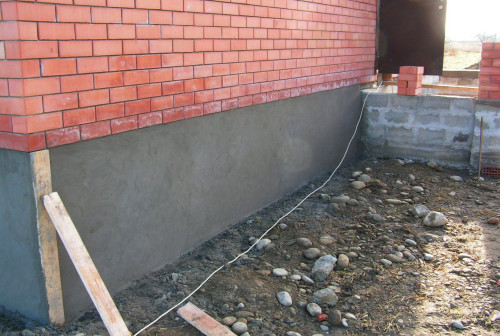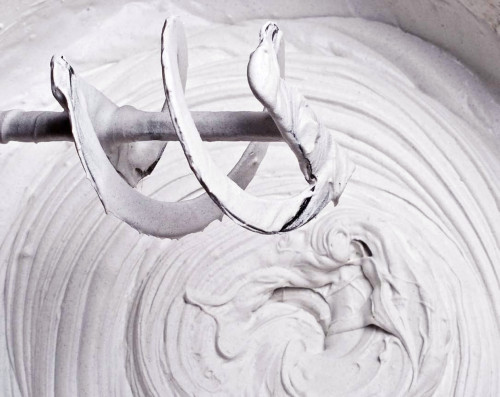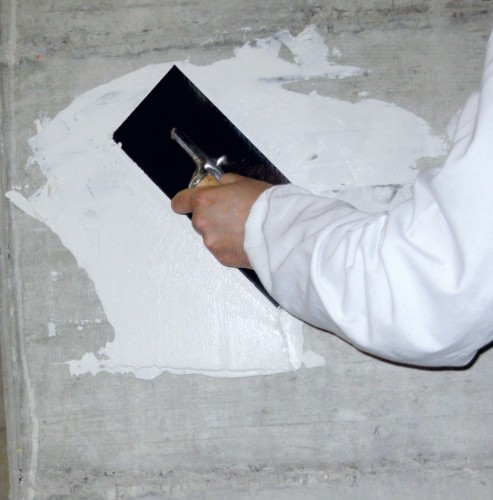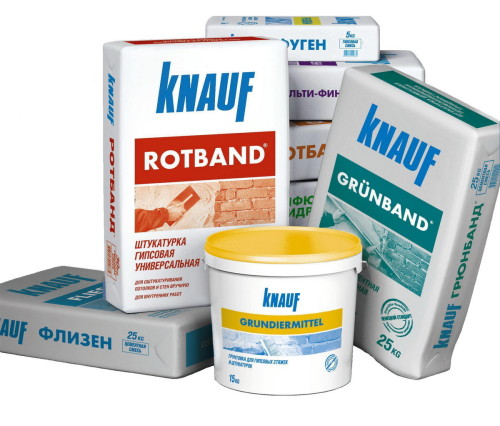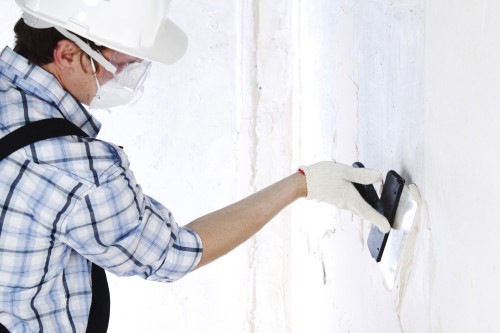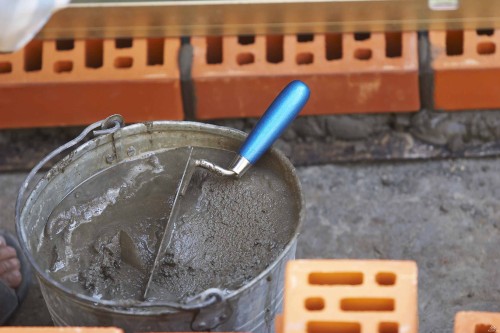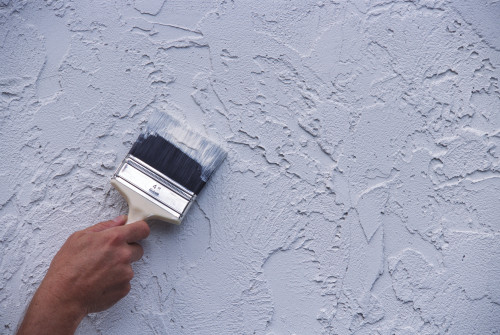The modern construction industry can provide a huge selection of a variety of materials used when finishing the base. Nevertheless, shuttering does not lose its popularity. Using modern technologies, such an design of the base may look very original and varied. In addition to the traditional method of plastering for the base of the sand-cement mortar, it is possible to make decorative or mosaic. This design will not only decorate the building, make it neat and presentable, but also will warm the walls, protect them from destruction.
Content
The base is given an important place in the external structure of the house, numerous loads affect it, it performs a number of responsible functions, one of which is a uniform distribution of the pressure of the building for the foundation. The foundation, being underground, is not so exposed to the influence of the Sun, frost, water and temperature drops. Facing the base of the plaster is an important stage of work to protect the base from aggressive impacts, and giving it a refined appearance.
As an external protective coating, stone, porcelain tiles, tiles, siding, lining or other attachments are usually used. However, the cheapest and most common type of protection of the base of the house, which is used by the builders around the world - is plaster.
Types of plasters for base
Terrazitic plaster and its features
- Beautiful and original will look the base, decorated with the use of terrarasitic plaster. The surface treated in this way will be high-resistant to mechanical effects and influence of water, because the base of the plaster mixture will be a lime-cement composition, which includes mineral fillers resistant to the aggressive medium.
- The surface of the base, made using terrarasitic plaster, has a multilayer structure. The first layer is a preparatory basis, and the second is decorative. After applying the ground layer, it is necessary to moisten it with water, and after that it is applied to the upper, more presentable, layer, moving it with a special grater. This process is quite laborious and occupies quite a long time, however, the result and further effect will delight you.
- The top layer is easier to apply, spraying the solution over the frozen primer base. The surface made in a similar way received the name of the fur coat. It is easy to apply, and its layer as a result is impressive and provides a high degree of insulation and water resistance. Having professional tools, the solution can be sprayed by an ordinary broom.
Plaster under a stone
- Plastering base under stone is fairly in demand. Rustic, Roman and prismatic masonry uses extremely popular. It is often used to simulate different types of plaster, such as chicken, rounded, slight, flat, rectangular and square. The essence of this method is to simulate a picture using a special toolkit.
- A special solution is usually used for the camneal plaster base of the house, with which they mimic the surface of such expensive materials such as marble, granite and other counterparts. The surface of the base in this case turns out to be beautiful, durable and durable, but the application of such a coating is quite complex and time-consuming process.
Fuckers for plaster
Before staying on the selection of material for plastering the base, learn the practical photos of their varieties with the recommendations of professionals on the pages of any construction online store.
Types of mixtures for plaster
- filler in the form of crumbs of stone;
- plasticizer;
- cement.
Source materials are often applied in a semi-dry state using a regular trowel. Figure Stucco is performed using special steel or bronze stamps.
Properties of mixtures for plaster
For external work, cement-sand, silicone, acrylic and decorative plaster are used.
The main properties of modern mixtures:
- resistance to frost and heat and temperature drops;
- wear resistance relative to the destructive effects of water and humidity;
- invulnerability to the effects of steam;
- increased sound insulation;
- increased thermal insulation;
- ease of work on mixing;
- a variety of textures and rich color gamut.
The cladding of the base of the plaster will protect it from the effects of aggressive manifestations of the external environment, which gradually lead to the destruction of an unprotected surface. The mixtures have the ability to pass through themselves, which will also provide the durability of the base. The protective layer will prevent ingestion of the structure of cold air and unnecessary noise. Applying plaster, even with minimal skills in construction, can be made with their own hands, and a large selection of texture and a rich color palette will make your base unique.
Selection of plastering mixture for basement: features
- The composition for plaster is a combination of a variety of additives and a base - a binder. The ratio of the components of the mixture for external treatment of the base determines its characteristics, the method of overlay and appearance.
- The most economical option today is the composition of the plastering mixture on a cement basis. The modern brands of this material are distinguished by increased strength and resistance, which is not at all lost over time, but, on the contrary, it only increases. Special additives are used to reduce moisture impact on the base. The lack of this type of plaster can be attributed, more than a modest coloring palette. But it can easily eliminate it using the subsequent coloring of the base with moisture-resistant materials.
- Plastering mixtures based on cement are often sold in the form of dry mixtures, which are bred by conventional water, in accordance with the manufacturer's instructions. It is unacceptable to violate the recommendations, because as a result, the quality of the surface obtained worsens, and it will be harder to work with such a solution.
- If for your base you want to use a coating of decorative plaster, then the best option will be an acrylic surface. The basis of such plaster is resin, and special fillers give it not only resistance to moisture and temperature drops, but also allow the air to be painlessly. Such a surface, including, will not be exposed to fungus, it does not mold and confront other microorganisms.
- Manufacturers are packaging acrylic plaster in the form of a finished solution, which remains only to stir in accordance with the instructions before applying.
- Silicon plaster has a rather high price due to high quality indicators and versatility. The composition is based on polymer compounds, which provide surfaces to effectively protect against any negative impacts, and give it an attractive appearance for many years.
- Surface with silicone particles repels dirt, protects against microorganisms and has high hardware. This feature makes silicone plaster indispensable for buildings from aerated concrete. The composition is very easily applied to the surface and has a rather rich color palette, which will make it possible to pick up any color and even a combination of colors.
Methods for applying plaster on the base
- There are manual and machine methods of cladding the base with the help of decorative plaster. A manual way does not require the cost of the purchase of an expensive tool, and for textured base, special spatulas and ability to work with them are needed.
- External work with the base must be carried out in accurately compliance with the technology recommended by the manufacturer, which determines the rate of application, the time and order of its drying.
- So that work on plastering was systematically, it is necessary to produce all preparatory work in advance. For this, the surface is cleared of traces of old coating and dirt, all irregularities are eliminated with the required level. Sections with traces of old plaster must necessarily be rimmed, and for a better adhesion of the mixture to the surface it is pre-apply deep furrows.
- Weather conditions undoubtedly affect the quality of work. Strong wind will prevent the high-quality application of plaster, and hot weather promote premature drying of the solution during operation. The most favorable air temperature is the limit of 5 to 25 ° C heat. At the same time, air humidity should not exceed 70%.
Facing the base of plaster
The base of the base has a number of advantages that are absent from other materials. Having made an external trim of the base, you transform your home, it will have a presentable look and acquire its unique individuality.
First of all, prepare a set of a working tool consisting of a plastic grater, roller, a wide painting brush, a peel, a spatula and a large-scale construction sponge.
Installation of mosaic plaster: Step by step instructions
Mosaic plaster is not so often applied, but it is very original and effect. Consider the phased order of work in this way of designing the base of the house.
- It is necessary to prepare the surface of the base, namely align the surface, clean and remove the old coating.
- Even stucco mesh on the surface with a dowel with wide hats. One m² must be attached at least 16, and better on 20 dowels.
- The next step is measured about 30 cm from the angle of the wall and with the help of screws mounted a plumb. The thread is fixed strictly vertically on other screws, it turns out, 2 pairs of screws on each wall with a thread stretched between them. The same is done with horizontal threads, and so that they are from the wall at a distance of at least 2 cm.
- Then, on the threads, we exhibit steel beacons in a step of about 2 to 5 m, which fix cement mortar and expect to fully froze.
- On the prepared surface we applied primer, depending on the material from which the base is made. It is important to pick up the mixture that is intended for this material.
- Before use, the primer needs to be dissolved with water to a pasty state. Professional builders recommend buying a ready-made mixture, and not dry primer. For the price, the difference is small, but the latter requires less time for execution, with sufficiently high quality.
- When the main layer dries off, you can start decorative work. Plastering the upper layer is also better to be carried out with a finished solution, since to achieve the necessary shade of the desired color it is unlikely to succeed. It is more practical to use the factory mixture, because the solution yourself will prepare small portions, and you are unlikely to achieve uniform painting.
- On 1 m² of the area, it is usually necessary from 2.5 to 6 kg of solution. Consumption depends on the magnitude of the granules and the method of application. Having calculated the amount of solution you need can be searched for plaster. It is easy to apply it to the base with a wet method on a wet. By covering one layer, it is evenly aligned until complete drying, follow the same way the second is applied using a special metal grater.
- In order for the boundaries of the plots did not stand out on the surface and did not look like individual stains, it is important to level the surface in such a way that the mixture layer is approximately equal to the size of the granules.
- In conclusion, it is important to give the plaster to finally dry, it will be needed for a couple of days.
Installation of plaster: Recommendations
- The plaster on the grid will ensure the adhesion strength of the base of the base with the solution. For those who are interested in plastering the base, there are a large number of video lessons in which step by step is shown in detail how correctly and in which sequence are performed such a type of work.
- Remember that the thick layer of plaster will better protect the base, and the thermal insulation will be even more efficient. The application of the material is better to produce in two layers, with the finishing coating to handle with decorative material.
- For a more durable and handling, the reinforcement of the upper layer is used, so the plaster will not crack and fall.
- Playing surfaces are characterized by simplicity of repair work, do not require the use of complex equipment, tools and instruments.
- Processed surfaces have a number of disadvantages compared to other types of coatings. If they are compared with stone, tiles or other types of alternative materials, this material is inferior to them in strength, service life, degree of isolation and it is more permeable for moisture than the above-described analogues. The processes of thawing and freezing, naturally, gradually destroy such a coating, so it is not recommended to process the surface of the base at negative temperatures.
- To protect the layers of the base, various materials are used, the most common and inexpensive currently remains shockting. Using modern technologies, it can be achieved that the surface of the base will look like laid out of a natural stone. It is also possible to imitate under the tree and even metal. This surface will be sufficiently strong and resistant to aggressive media.



